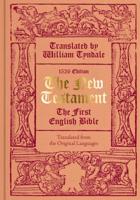Publisher's Synopsis
This is the first major study to focus solely on the victor sayings and should prove invaluable to scholars and students of Revelation and apocalyptic literature. It demonstrates that the motif of victory is Revelation's macrodynamic theme. Chiasmus is proposed as the book's macrostructure, based in part on the chiastic nature of the promises to the victors, with the later fulfillment of these promises in the book. The proposed forms for the seven letters--forms such as edicts, oracles, and epistles--are examined, and it is concluded that they are a mixtum compositum best called "prophetic letters." The sociological significance of victory is explored within the Greco-Roman world. The text of the promises and their co-texts (as reflected intertextually in traditions of biblical literature) receive thorough examination. The eschatological fulfillment of the victor sayings is surveyed in Revelation's later chapters, especially in chapters 21-22, where the new Jerusalem is depicted. The study concludes with an investigation of the ways that the promises were appropriated for the time and the text world of Revelation.









